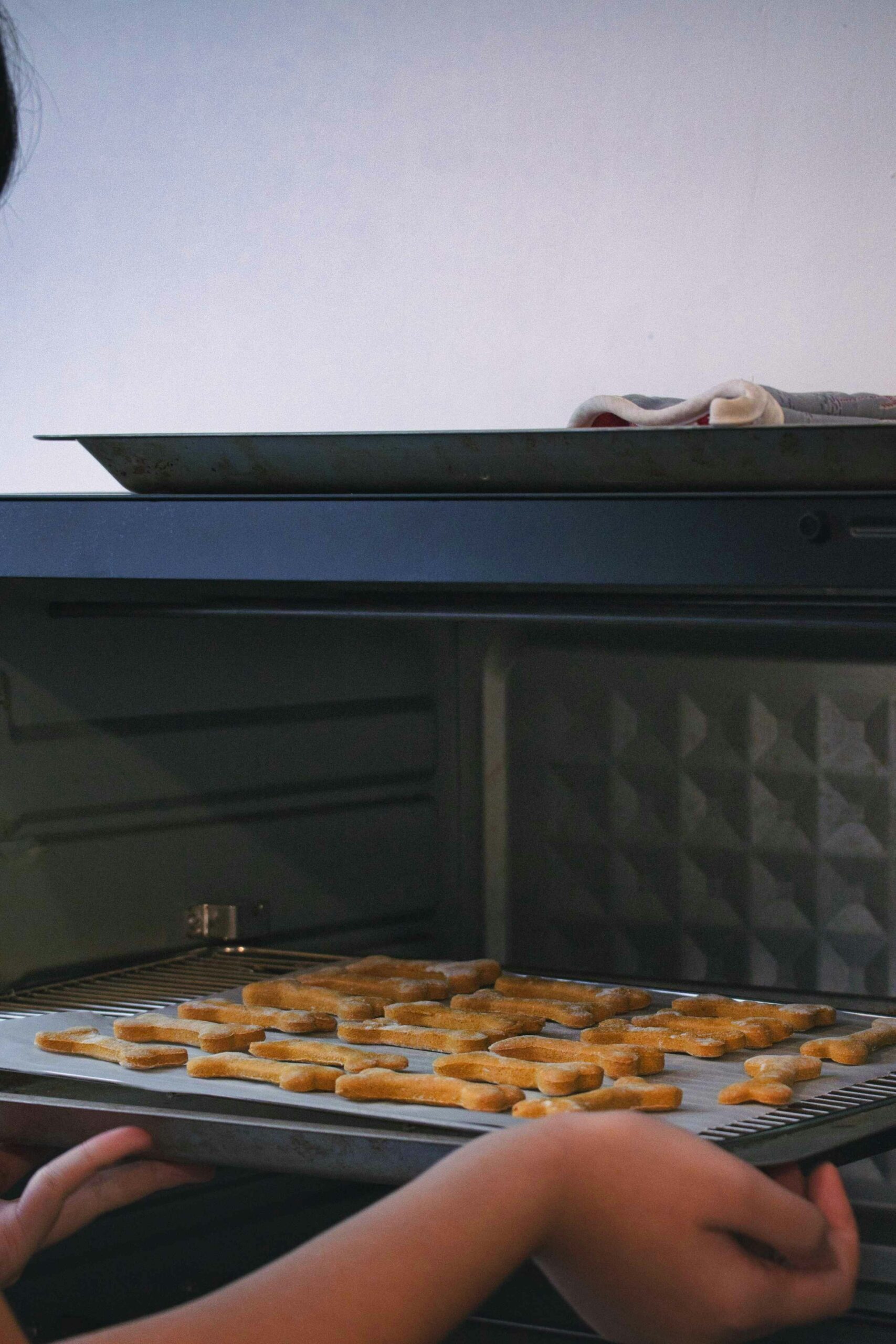Preparing homemade meals for your furry friend isn’t just a trend; it’s a commitment to their health and happiness. With countless benefits such as improved nutrition and fewer preservatives, making your own dog food can enhance your pup’s well-being. In this post, you’ll discover 10 easy homemade dog food recipes that anyone can prepare at home. These recipes not only provide essential nutrients but also cater to picky eaters. Say goodbye to store-bought options and hello to wholesome, tail-wagging goodness!
Benefits of Homemade Dog Food
Homemade dog food recipes offer a range of advantages that can significantly enhance your dog’s health and happiness. Here are some compelling benefits:
- Quality Control: You choose the ingredients, ensuring every bite is nutritious and free from harmful additives.
- Customization: Tailor recipes to your dog’s specific dietary needs or allergies, providing a meal plan that perfectly suits them.
- Taste Appeal: Dogs often find homemade meals more flavorful, leading to better meal times.
- Cost-Effective: Many store-bought dog foods can be pricey; homemade options allow you to save money without sacrificing quality.
- Bonding Experience: Preparing dog food recipes together can strengthen your bond with your pet.
By opting for homemade dog food recipes, you’re not just feeding your furry friend; you’re investing in their long-term health and happiness. Make the switch today to witness the positive changes in your dog’s life!
Essential Ingredients for Homemade Dog Food
Creating delicious and nutritious homemade dog food recipes requires careful selection of ingredients. Focus on these essential components to ensure a balanced diet for your furry friend:
- Proteins:
- Chicken
- Beef
- Turkey
- Fish
- Carbohydrates:
- Brown rice
- Sweet potatoes
- Quinoa
- Vegetables:
- Carrots
- Green beans
- Spinach
- Peas
- Fats:
- Olive oil
- Fish oil
- Supplements:
- Calcium sources (e.g., crushed eggshells)
- Vitamins and minerals (consult your vet)
Each ingredient plays a crucial role in maintaining your dog’s health. For instance, proteins provide energy and support muscle development, while vegetables supply essential vitamins.
When crafting your dog food recipes, keep the proportions in mind:
- Protein: 40%
- Carbohydrates: 50%
- Vegetables: 10%
By choosing high-quality ingredients and maintaining the right balance, your homemade dog food will not only be tasty but also foster a healthy lifestyle for your beloved pet!
Recipe 1: Chicken and Rice Delight
This Chicken and Rice Delight is one of the simplest yet most nutritious dog food recipes you can prepare at home. Packed with protein and fiber, it’s perfect for maintaining your dog’s health and energy levels.
Ingredients:
- 2 cups of cooked chicken (shredded)
- 1 cup of brown rice (cooked)
- 1/2 cup of carrots (chopped)
- 1/2 cup of peas (fresh or frozen)
Instructions:
- Cook the Chicken: Boil the chicken until fully cooked, then shred it into bite-size pieces.
- Prepare the Rice: Cook brown rice according to package instructions.
- Mix Ingredients: In a large bowl, combine shredded chicken, brown rice, chopped carrots, and peas until well blended.
Nutritional Benefits:
- Protein: Essential for muscle growth and repair
- Fiber: Aids in digestion and promotes gut health
- Vitamins: Carrots and peas enrich your dog’s diet with necessary nutrients
By adding this Chicken and Rice Delight to your repertoire of dog food recipes, you ensure a wholesome meal that your furry friend will love!
Recipe 4: Fish and Quinoa Bowl
If you’re looking for a nutritious and delicious option, this Fish and Quinoa Bowl will surely please your pup! Combining the health benefits of fish with protein-rich quinoa, this recipe shines as one of the best dog food recipes you can make.
Ingredients:
- 1 cup quinoa (rinsed)
- 1 cup water
- 1 can of salmon (or fresh fish fillet, cooked)
- 1/2 cup peas
- 1/2 cup carrots (diced)
- 1 tablespoon olive oil
Directions:
- Cook quinoa as per package instructions.
- In a separate pan, heat olive oil and sauté carrots and peas until tender.
- Add the canned salmon (or cooked fish) to the vegetable mix.
- Once quinoa is ready, combine everything in a bowl and stir well.
Benefits of this Recipe:
- High protein from fish helps build muscle.
- Omega-3 fatty acids support a healthy coat and skin.
- Quinoa offers fiber, aiding in digestion.
This easy recipe is not only quick to prepare but also packed with vital nutrients. Your dog will wag their tail in delight, and you’ll feel good knowing you’re making healthy homemade dog food!
Tips for Storing Homemade Dog Food
Storing your homemade dog food properly is crucial to maintaining its freshness and nutritional value. Follow these essential tips to ensure your dog food recipes stay safe and delicious:
- Cool Before Storing: Let the food cool to room temperature before refrigerating. This prevents condensation, which can lead to spoilage.
- Use Airtight Containers: Store your dog food in airtight containers to keep out moisture and odors. Glass or BPA-free plastic containers work best.
- Label and Date: Clearly label your containers with the recipe name and preparation date. This helps you keep track of what you have and ensures you use older recipes first.
- Refrigerate or Freeze:
- Refrigerator: Homemade dog food can last for about 3 to 5 days in the fridge.
- Freezer: For longer storage, freeze portions in freezer-safe containers. Most dog food recipes can last up to 3 months in the freezer.
- Thaw Safely: Always thaw frozen dog food in the refrigerator or use the microwave before serving; never leave it out at room temperature.
Storing your homemade dog food correctly will help you provide nutritious meals for your furry friend, maximizing the benefits of your dog food recipes.
Tips for Storing Homemade Dog Food
Storing your homemade dog food properly is crucial for maintaining its freshness and nutritional value. Here’s how to do it right:
- Use Airtight Containers: Choose BPA-free containers to prevent contaminants. These containers will keep your dog food recipes fresh and safe from spoilage.
- Label & Date: Whenever you make a batch of dog food recipes, label each container with the date. This helps you track freshness and ensures you rotate supplies effectively.
- Refrigerate Immediately: Store leftovers in the refrigerator within two hours of cooking. Proper refrigeration slows down bacterial growth and keeps your dog food healthy.
- Freeze for Longer Storage: If you make large batches, consider freezing individual portions. Silicone ice cube trays work well for easy portioning and thawing later.
- Check for Quality: Always inspect your stored homemade dog food for any signs of spoilage like bad odors or discoloration before serving.
By following these tips, you can ensure your homemade dog food recipes remain delicious and nutritious for your furry friend.
Tips for Storing Homemade Dog Food
Storing homemade dog food properly is crucial to maintain its freshness and nutritional value. Here are some essential tips to ensure your dog food recipes stay safe and healthy:
- Cool It Down: Always let the food cool completely before storing. This prevents condensation and bacteria growth.
- Use Airtight Containers: Invest in high-quality, airtight containers to keep out moisture, air, and pests. Glass containers are great, but BPA-free plastic also works well.
- Label and Date: Label each container with the contents and the date of preparation. This helps you track freshness.
- Refrigeration: Keep homemade dog food in the refrigerator if you plan to use it within a few days. It typically lasts about 3 to 5 days.
- Freezing: For longer storage, freeze portions of dog food recipes. Use freezer-safe bags or containers, and make sure to thaw portions in the fridge, never at room temperature.
By adhering to these storage tips, you can ensure that your canine companion enjoys delicious and nutritious meals, maximizing the benefits of your homemade dog food recipes!
Tips for Storing Homemade Dog Food
Storing your homemade dog food recipes correctly is essential to maintaining freshness and nutritional value. Here are some vital tips you must follow:
- Use Airtight Containers: Store your dog food in airtight containers to prevent spoilage. Glass or high-quality plastic containers work best.
- Refrigerate Promptly: If you’re not serving your dog immediately, refrigerate the food within two hours of preparation.
- Freeze for Longer Storage: For batches of dog food recipes you won’t use right away, freeze them. Use freezer-safe containers or bags to save space.
- Label with Dates: Always label your containers with the recipe name and the date. This will help you keep track of freshness.
- Check for Signs of Spoilage: Before serving, inspect the food for any unusual odors or colors. If something seems off, discard it immediately.
By following these tips, you can ensure that your delicious dog food recipes remain nutritious and safe for your furry friend. Proper storage enhances the longevity of your homemade meals, keeping your dog happy and healthy!
Tips for Storing Homemade Dog Food
Storing your homemade dog food properly is crucial to maintaining its freshness and ensuring your furry friend enjoys every bite. Here are some effective tips to keep in mind when handling dog food recipes:
- Use airtight containers: Store your dog food in airtight containers to prevent spoilage and maintain freshness. Glass or BPA-free plastic containers work well.
- Refrigerate promptly: After cooking, let your dog food cool down for about 30 minutes before refrigerating. This practice inhibits bacterial growth.
- Portion control: Divide your recipes into daily portions. This not only saves space but also makes feeding time hassle-free!
- Label and date: Always label your containers with the date prepared. Use older batches first to prevent waste.
- Freezing for longevity: If you cook large batches, freeze individual portions. This extends the shelf life of your dog food recipes and saves time on busy days.
By following these simple tips, you can ensure your homemade dog food recipes remain nutritious, fresh, and safe for your beloved pet!
Tips for Storing Homemade Dog Food
Storing your homemade dog food properly is crucial to maintain its freshness and nutritional value. Here are some essential tips to ensure your dog food recipes remain safe and delicious:
- Use Airtight Containers: Store your dog food in airtight containers to prevent exposure to air, which can cause spoilage.
- Label with Dates: Always label containers with the preparation date. This helps you keep track of freshness.
- Refrigerate or Freeze:
- Refrigerate: Store cooked meals in the fridge for up to 3-5 days.
- Freeze: For longer storage, place portions in freezer-safe bags or containers, keeping them for up to 3 months.
- Thaw Properly: When using frozen dog food recipes, always thaw in the fridge or use a microwave to ensure even heating.
Following these storage guidelines will not only save time but also enhance the safety and quality of your homemade dog food recipes. Keep your canine healthy and happy by providing fresh, nutrient-packed meals every day!



